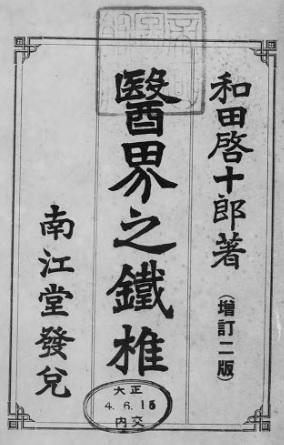Universalization and boundary-making
Wada Keijuro's "Iron hammer of the medical world" (1910), an apologia of Chinese medicine. Source: National Diet Library, http://dl.ndl.go.jp/info:ndljp/pid/934880
Concepts that cross borders, transcultural references, conflicting claims to universal applicability and discourses of particularity - the graduate school will engage patterns of movement and spread as well as arrest and denial of ideas in a period of global integration characterized by increasing time-space compression (Harvey) and the growth of a global consciousness. Four areas will be of particular interest to the school:
-
Universalization
Since the late 18th century, ideas and concepts that claimed for themselves global and/or universal validity were on the rise. How can we conceptualize this proliferation? Were some ideas more suitable for universalization than others? In what social, political and gendered structures did they germinate? -
Boundary-making
The increasing global circulation of ideas did not automatically lead to a homogenization of intellectual resources. Intellectual transfer could also become the starting point for boundary-making, segregation and exclusion. We will attend to the interplay between universal pretensions and the insistence on the particular and the unique. -
Cosmopolitanisms
Beyond the conceptual realm of the universal, border-crossing contacts and networks since the early modern period created sites of conversation that were maintained less through a recourse on philosophical principles or other theoretical means than through an often provisional lived practice. How do such spheres and modes of commensurability shape intellectual exchange? -
Visions of world order
Transcultural intellectual activity is always embedded in competing forms of world-making and visions of world order - imperial or global, flat or hierarchical, premised on ideals of exclusivity or a commonwealth. We will probe into the ways world order informs intellectual production - and vice versa.

